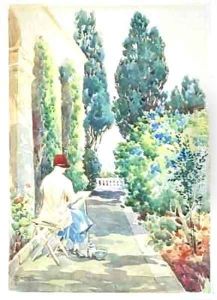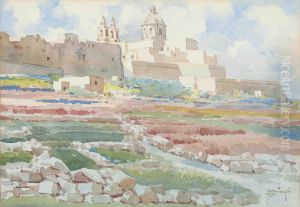Robert Caruana Dingli Paintings
Robert Caruana Dingli was a Maltese painter born on October 18, 1882, in Valletta, Malta. He was part of a significant artistic lineage, with both his father and his brother, Edward Caruana Dingli, being respected artists of their time. Robert developed an interest in art early on, likely influenced by his family's artistic environment.
Caruana Dingli pursued his passion for art by studying at the Scuola di Belle Arti in Rome, where he was exposed to the Italian masters and the contemporary art scene of the early 20th century. His work primarily reflected the academic style of the period, focusing on portraiture, genre scenes, and historical subjects. Upon returning to Malta, he quickly established himself as a leading portrait artist, capturing the likenesses of many prominent figures in Maltese society.
Aside from his portraiture, Caruana Dingli also created works that depicted everyday life in Malta, showcasing his versatility and keen observation of local customs and traditions. His ability to encapsulate Maltese identity within his work earned him considerable acclaim.
Throughout his career, Caruana Dingli exhibited his work both locally and abroad, gaining recognition and winning several awards. His paintings are characterized by a strong sense of realism, attention to detail, and a vibrant use of color. He played a vital role in the Maltese art scene, influencing a generation of Maltese artists.
Robert Caruana Dingli passed away on March 13, 1940. His legacy lives on through his contributions to Maltese art and culture, and his works are still celebrated and studied for their historical and aesthetic value. They can be found in various collections, including those of the National Museum of Fine Arts in Malta.

